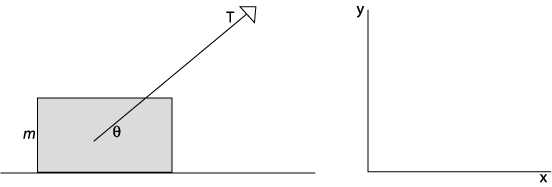|
|
|
|
| Solution |
 |
|
Q1: The magnitude of the normal force exerted on the block by the force is given by: d) mg - Tsin q, since forceT is a vector it has twp components, an x and a y componet. The y component,Tsin q is perpindicular to the floor and therefore parallel to the normal force. Using this we can eliminate distractors a,b, and c. Distractor e neglects the force of weight mg. Q2: The magnitude of the frictional force exerted on the block by the force is given by: a) We know that the mass is moving at a constant velocity so
there is no net force. We also know that Ff =mkFn
or using our solution for part a, Ff = mk(mg
-Tsinq) = Tcosq Since this is not one of our solutions the answer is a. Q3: During a horizontal displacement: Dx of the block: Since th displacement is horizontal we can rule out any distractors during with potentional energy (c and e). Due to the fact that the velocity is constant we can rule out a kinetic energy change (d). The block is moving horizontally therefore we need to use the force component, Tcosq. |
|
|
|
|
